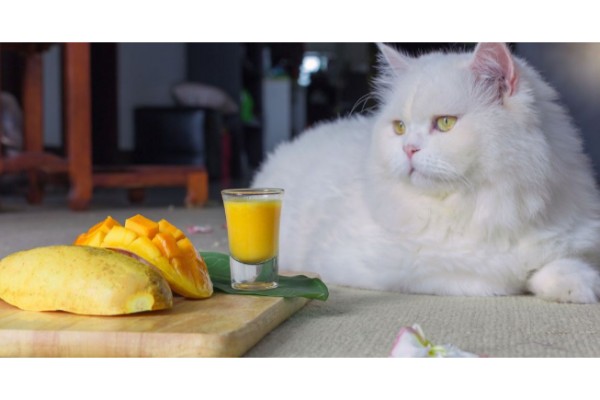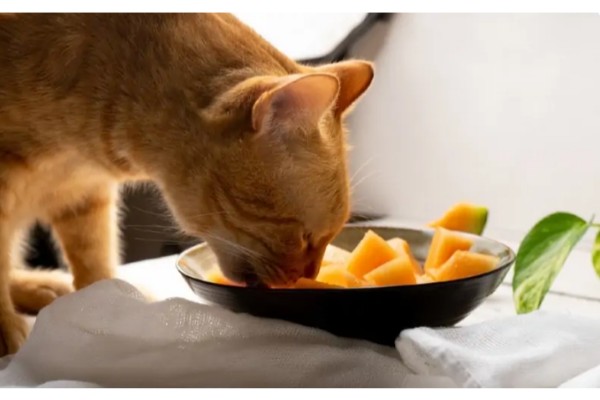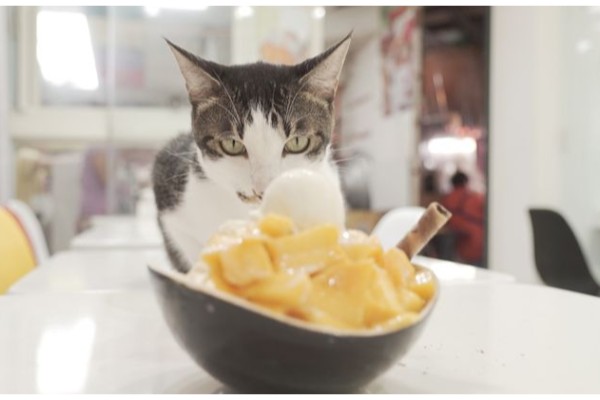The answer is yes, mango is safe for cats to eat. Mangoes are sweet, hydrating, and nutrient-dense foods. If you want to give your cat’s diet a little more variety, they can be a great occasional treat. However, because cats cannot taste sweet flavors, they won’t be particularly drawn to eating mango and may not like the flavor.
Table of Contents
Benefits Of Mango For Cats
Your cat is unlikely to like mango because cats lack the taste receptors for sweet flavors.
Mango is sadly not very nourishing for cats, despite being very nourishing for humans. Cats benefit from vitamins, fiber, and antioxidants, but the high sugar content of the food outweighs these advantages.
Sugar can make cats sick, so they can’t consume as much as humans do. Cats are also obligate carnivores, which means that they must eat meat and fish to stay healthy. As a result, this is where they get the majority of their nutrition.
Cats can enjoy a tasty treat on special occasions—a small amount of freshly peeled mango. But you can also give your feline friend healthier and more nutritionally sound treats, like less-sweet fruits like apples and blueberries, as well as more balanced meals.
The Risks Of Mango For Cats
Cats Are Carnivores
The fact that cats are strict carnivores is the biggest issue with giving them mangoes or any other fruit. Fruits are not a natural part of the diet of cats, so they do not eat any in the wild. Instead, they favor killing mice, birds, insects, and other small animals. Mango, which cats don’t typically eat, can upset their delicate digestive systems, resulting in discomfort and even diarrhea. Some cats will be more vulnerable than others, so you must watch them closely the first few times you give them new food, like mango.
High In Sugar
Mangos and other fruit have a high sugar content, which is another drawback. Obesity is already a major concern for cats in the United States, and eating too much sugar can easily result in weight gain and other health issues. It’s often preferable to pick a healthier snack because some experts believe that up to 50% of cats over the age of five are obese. Another issue that many cats face in the United States is tooth decay, which is made worse by the high sugar content. According to experts, up to 90% of cats over the age of four may have some sort of dental problem. Giving your cat sugar has no benefit either because they cannot taste sweet things (likely because they only consume fresh kills in the wild), and there is no need for them to be able to do so.

How Do You Give Your Cat A Mango?
Make sure you never go overboard if you and your veterinarian agree that giving your pet a mango cube as a treat is okay. Usually, just one tiny cube will be enough to pique your cat’s interest.
Here are some other tips to consider when giving your cat mango:
- Remove the seeds
- Don’t let your cat eat the peel
- Cut it into small cubes that can be easily eaten by your cat
- Use fresh mango and avoid fruits in syrup or dried mango – as these products will have a very high sugar content
Symptoms To Watch Out For The First Time
After peeling, seed-removing, and cutting the fruit into bite-sized pieces, you have the veterinarian’s approval. It’s time to find out what your cat thinks now. After giving your cat something new, it’s wise to keep an eye on them. You should consult your veterinarian if you experience symptoms like vomiting or continual diarrhea. Additionally, keep an eye out for symptoms of choking so you can act quickly if necessary. Always make sure your cat only receives one small mango cube per feeding.
It’s important to keep in mind that mangos can taste quite acidic, so many cats won’t be interested! Consider trying a different treatment option if your moggie isn’t interested.
Check out other fruits your cat might enjoy now that you know they can eat mango. Find out if cats can eat grapes and if it’s safe to give your cat bananas.
Can A Cat Eat A Lot Of Mango?
Cats can occasionally consume a small amount of fresh, peeled mango, so if your feline friend manages to get their hands on a few pieces, you shouldn’t be too concerned.
Mango, however, should only be used as a very rare treat because too much of it may cause your cat’s stomach to become upset or result in weight gain. Just a few incredibly tiny pieces will do.
How Frequently Can A Cat Eat Mango?
Your cat’s diet shouldn’t include mango on a regular basis. When given as a special treat, a small piece of fresh, peeled mango is sufficient. Your cat won’t be able to consume enough sugar if the amount is higher. Since cats cannot taste sweet flavors, mango won’t particularly appeal to them.
FAQs

Does The Flavor Of Mango Appeal To Cats?
Some cats will do anything to get their paws on some human food, as cats frequently enjoy a small taste of it. However, because cats cannot taste sweet foods, they are not drawn to the mango’s sweetness by nature. They might like the texture of mango, but since they won’t get to taste how delicious and sweet it is, they’re more likely to dislike it.
Can I Give My Cat Dried Mango?
You can give your cat dried mango, but you need to be careful because this fruit has a much higher sugar content. Additionally, dried fruit lacks the hydrating qualities of fresh mango and may contain preservatives and other chemicals that are harmful to your pet. As a result, you should only let your cat eat small amounts of fruit from brands you know and trust.
Which Additional Fruits Can I Give My Cat?
Several other fruits, such as apples, bananas, strawberries, blueberries, cranberries, pumpkin, watermelon, and many others, can be given to your cat. As with mango, each of these fruits must be carefully cleaned, and serving sizes should be kept to a minimum.
Summary
As long as you control portion size to prevent your cat from consuming excessive amounts of sugar, mango is a fruit that is safe for consumption. It can be a great way to persuade a cat to eat because many cats seem to enjoy the flavor. The drawbacks include its high sugar content and potential to upset your cat’s delicate digestive system, which is only meant to process animal protein.
